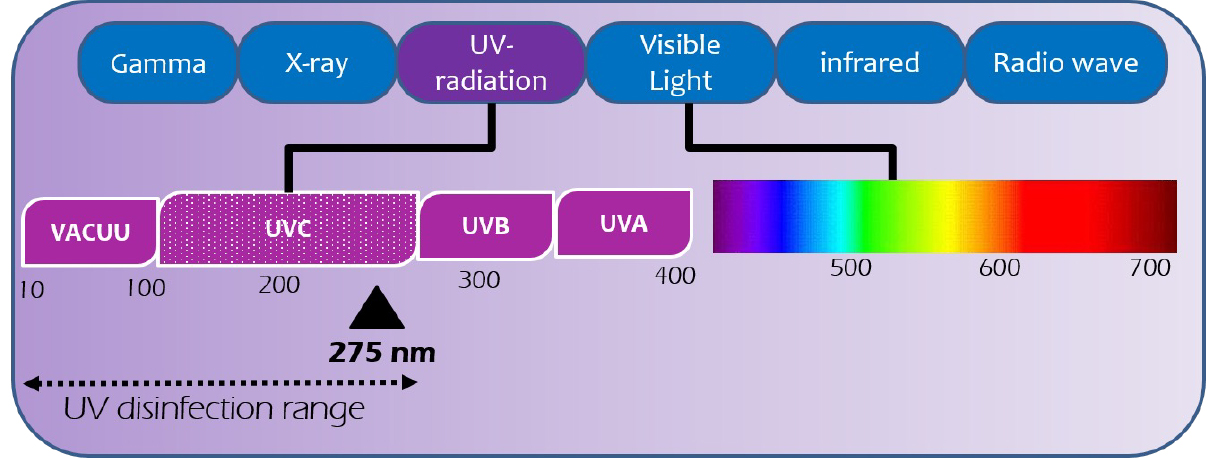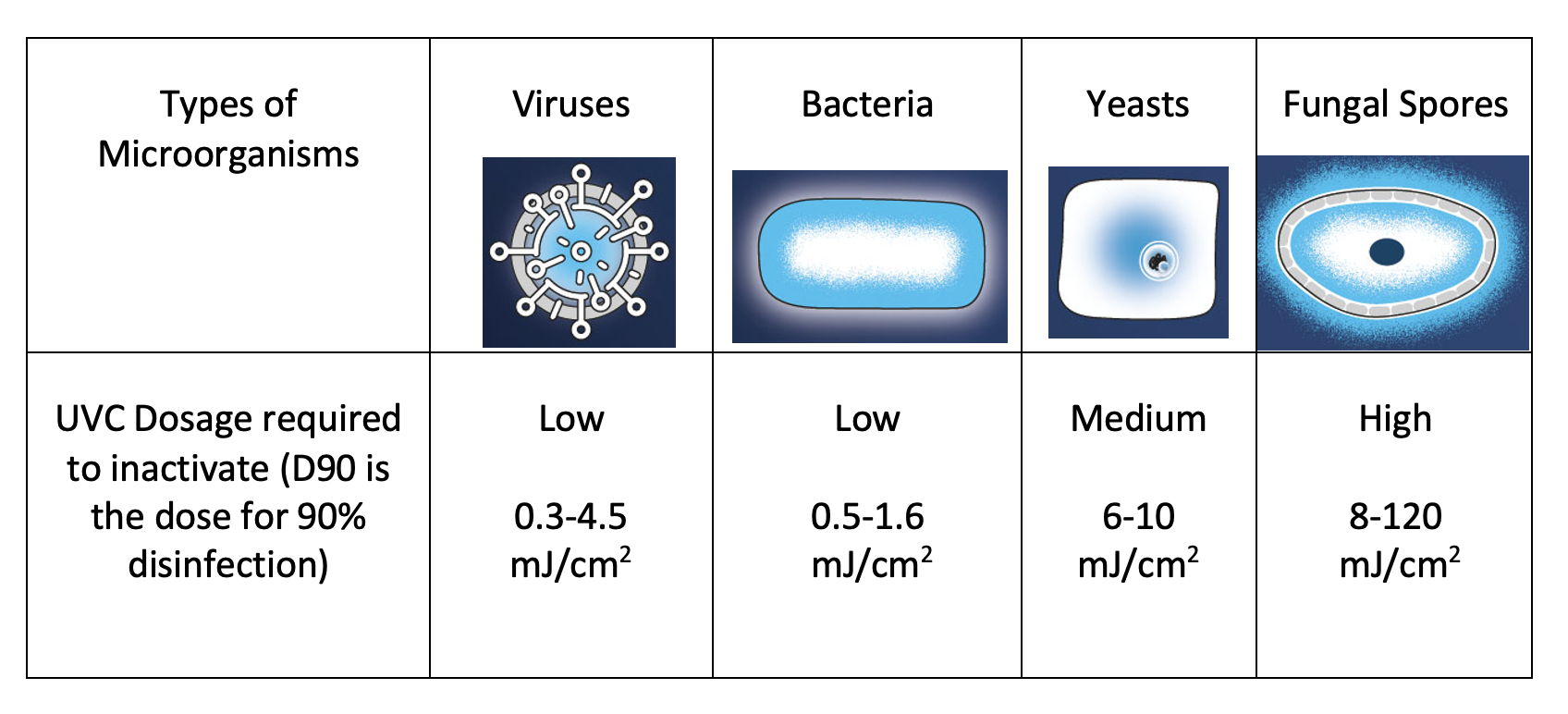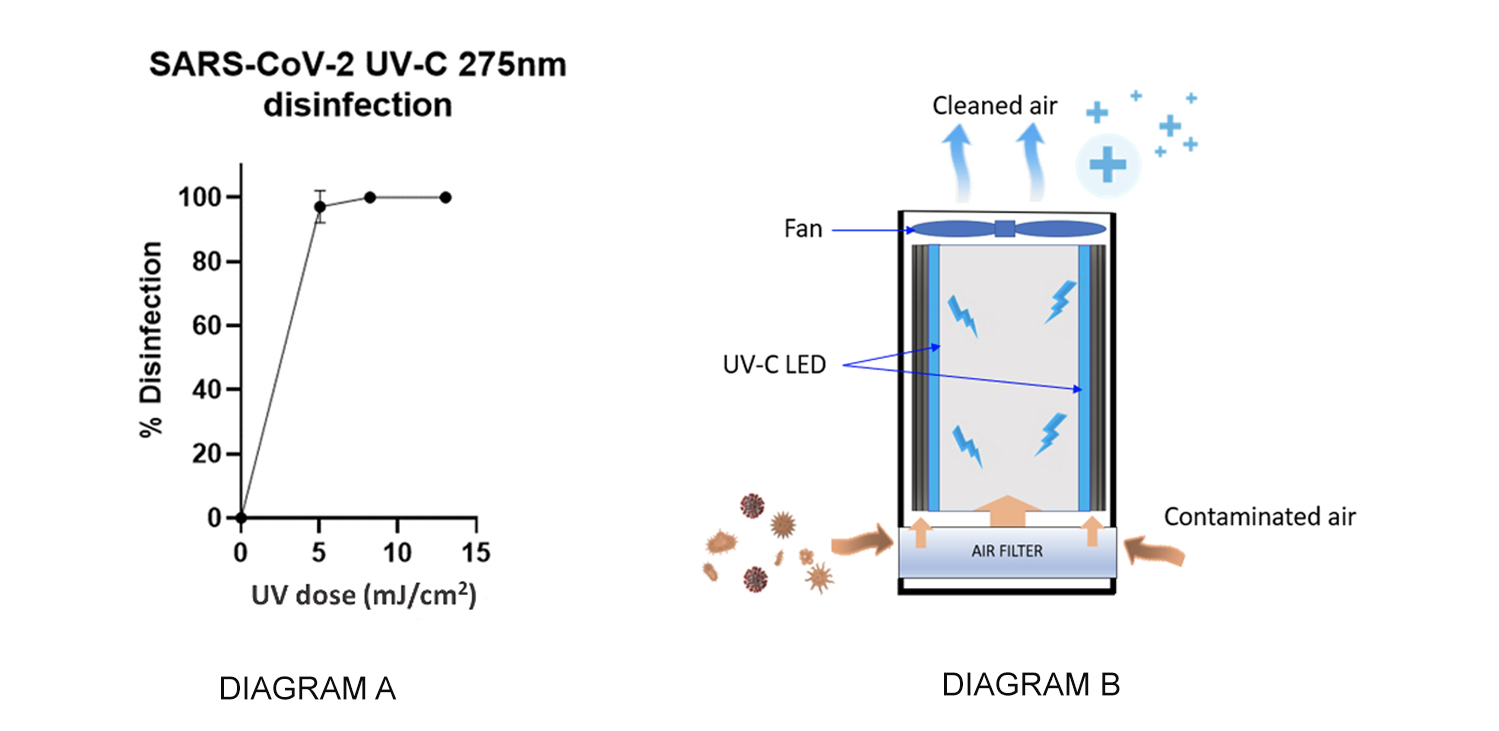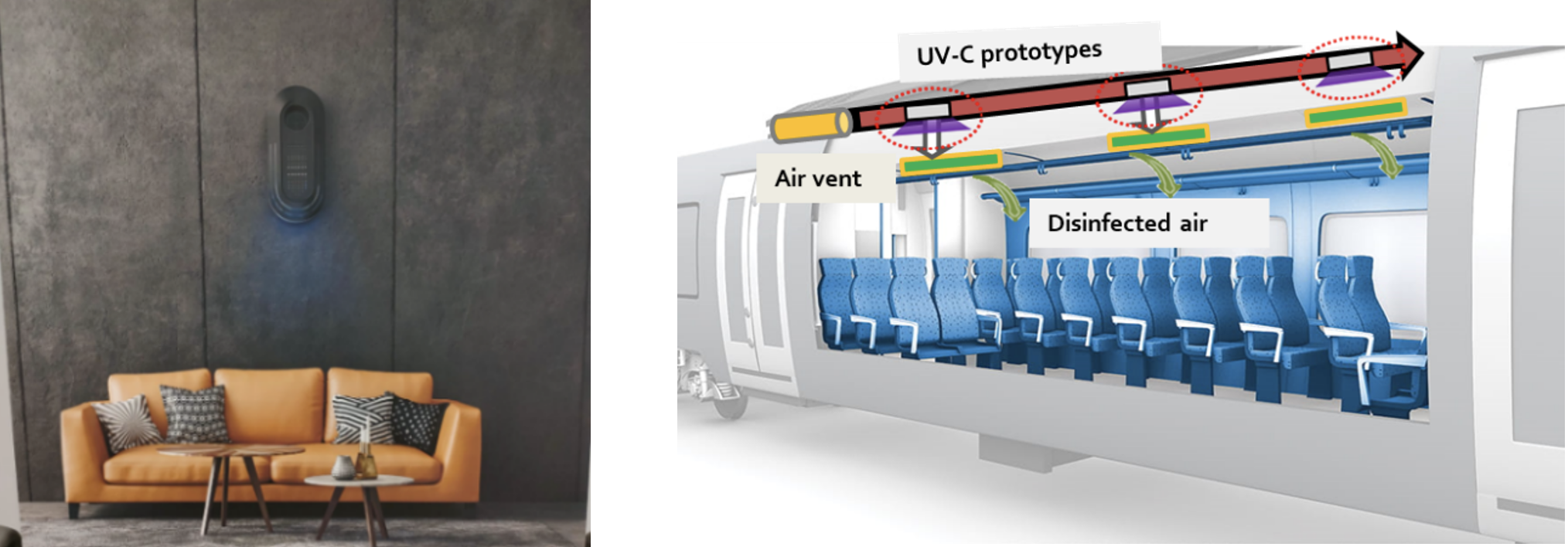
- Press Releases
- Industry Updates
- SIMTech Manufacturing Matters
- Manufacturing Matters
- SIMTech 30th Anniversary
- Events
- ASPEN2022
- BCA Green Mark (Platinum) for Healthier Workplaces and Laboratories
Helping Us Breathe Easy
A*STAR research institutes team up to develop UV-C LED air disinfection technology
In response to the COVID-19 pandemic and general public health and safety needs, researchers from five A*STAR research institutes collaborated to develop an effective air disinfection solution. This partnership between the Singapore Institute of Manufacturing Technology (SIMTech), Advanced Remanufacturing and Technology Centre (ARTC), Institute of Bioengineering and Bioimaging (IBB), Infectious Diseases Lab (ID Labs) and Institute of High-Performance Computing (IHPC) has been instrumental in the development of a UV-C LED-based air disinfection solution to clean indoor air.
What is UV-C light and how does it work?
Ultraviolet (UV) light is an invisible light having wavelengths between 10-400 nanometres (nm) and divided into UV-A, UV-B, and UV-C. UV-C light that ranges from 100-280nm has disinfection properties.
Ultraviolet germicidal irradiation uses energy from UV light of less than 290nm to kill viral, bacterial, and fungal organisms. This bio-inactivation process uses photo-chemical effect of UV light to disrupt the DNA of microorganisms such as bacteria and viruses, affecting the multiplication of pathogens and causing them to die.

How effectively can UV-C light kill microorganisms?
UV germicidal LEDs can kill up to 99.9% of microbes. However, different organisms require varying intensities of UV to inactivate. Viruses and bacteria are very sensitive, while yeasts and molds/spores are more resistant to UV-C light. To disinfect different families of microbes, varying UV dosages (duration of the pathogen exposure at a given UV-C intensity) are required. This can be achieved through either high-intensity light exposure for a short period, or low-intensity light over an extended period. UV-C light has been widely used to disinfect water, surfaces, and in the healthcare industry to control the spread of pathogens, and also has the ability to disinfect air.


Will UV-C work on the SARS-CoV-2 virus?
At the right dosage, exposure to UV-C light will kill the COVID-19 virus, as with other viruses. Experimental results from A*STAR’s SIMTech and ID Labs’ testing show that 275nm UV-C LEDs can kill the airborne SARS-CoV-2 with up to 99% efficacy in a controlled BSL3 lab testing environment [source: NMRC report MOH-000721-01 for UV-C solution for air disinfection in confined spaces (unpublished data)]. [Refer to Diagram A]
What are the potential harmful effects of UV-C?
UV-C light wavelength (100-280nm) is invisible to the human eye. The presence of UV-C light is often identified through the use of safety features (e.g. caution signs, warning lights, etc) for biological safety. UV-C radiation is dangerous to skin and eyes, so it is best to avoid exposure. To ensure the safety of our products, our UV-C LEDs are shielded and tested for UV leakage following IEC standards.
How does A*STAR’s UV-C Disinfection Device work?
Contaminated air from a room will be drawn into the air disinfection device through the air filter. It will then flow through the UV-C LED air disinfection chamber installed with UV-C light sources at a 275nm wavelength, and disinfected of airborne pathogens. Disinfected air will then be released from the device back to the room. [Refer to Diagram B]
How did the A*STAR team develop the UV-C air disinfection solution?
UV-C LEDs of 275nm were proven to be germicidal for airborne microbes by effectively disinfecting 99.9% of airborne bacteria, corona viruses, spores, and SARS-Cov2 viruses. Prototype designs were aimed at achieving 99% disinfection through tests with aerosolised bacteria in A*STAR’s controlled bio lab environment. Following ISO 16000-36:2018 test standards, the indoor-air prototype was shown to be effective, with a 99.99% disinfection rate.
The prototype is compliant to Clause 13 and 16 of IEC 60335-1, IEC 60335 2 65 and IEC 62471 requirements, for electrical safety and photo biological safety of lamps and lamp systems respectively. The prototypes were also field tested in real-world environments, including washrooms (32 m3) and a building air-duct (500 m2 room area).
Prototypes for indoor air disinfection: Indoor spaces & transport systems Left: Air disinfection field test results in washrooms (32m3) & Right: Air disinfection field test results with air disinfection device installed in building air duct. Air samples were collected at intervals using air samplers and tested for successful disinfection of the bacteria.
Left: Air disinfection field test results in washrooms (32m3) & Right: Air disinfection field test results with air disinfection device installed in building air duct. Air samples were collected at intervals using air samplers and tested for successful disinfection of the bacteria.
Choosing a UV-C LED disinfection device
When choosing a UV-C LED disinfection device, the following are important factors to consider:
- Safety of the devices and systems. Appropriately-tested products pose little risk to human health and safety.
- UV wavelengths of disinfection products. Wavelengths should be of 240-280nm to have germicidal effects.
- UV light intensity and dosage output that correlates to pathogen disinfection efficacy.
- Device portability – can you carry it with you and use it to disinfect the places you regularly spend time?
A*STAR’s UV-C LED air disinfection technologies and prototypes have been validated and are ready for commercialisation by interested industry partners. For more details and collaboration opportunities, please contact Industry Development Manager Mr Joshua Thong at cmthong@simtech.a-star.edu.sg.
References
1. International Organization for Standardization (2019) ISO 15714:2019(en)—Method of evaluating the UV dose to airborne microorganisms transiting in-duct ultraviolet germicidal irradiation devices (International Organization for Standardization, Geneva, Switzerland). https://www.iso.org/obp/ui/#iso:std:iso:15714:ed-1:v1:en
2. https://www.bioclimatic.nl/en/effect-of-uvc-disinfection.html
A*STAR celebrates International Women's Day

From groundbreaking discoveries to cutting-edge research, our researchers are empowering the next generation of female science, technology, engineering and mathematics (STEM) leaders.
Get inspired by our #WomeninSTEM
.png?sfvrsn=843a4005_8)